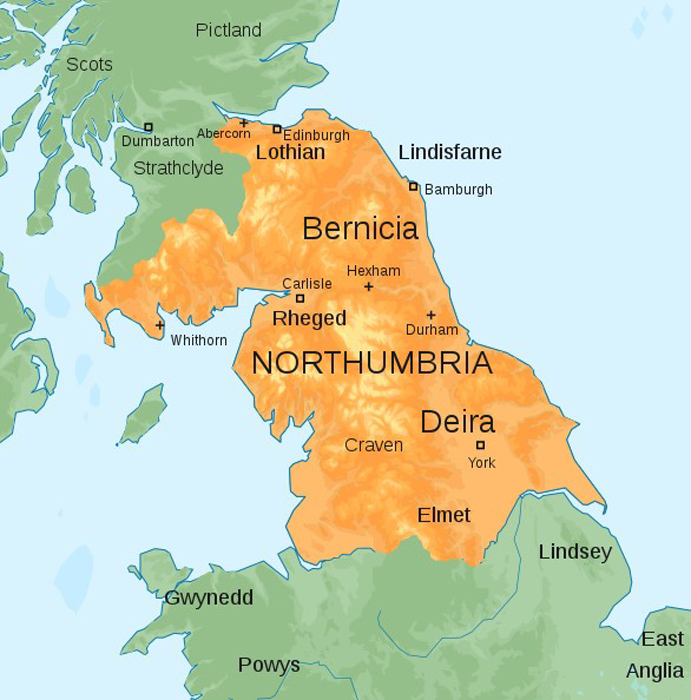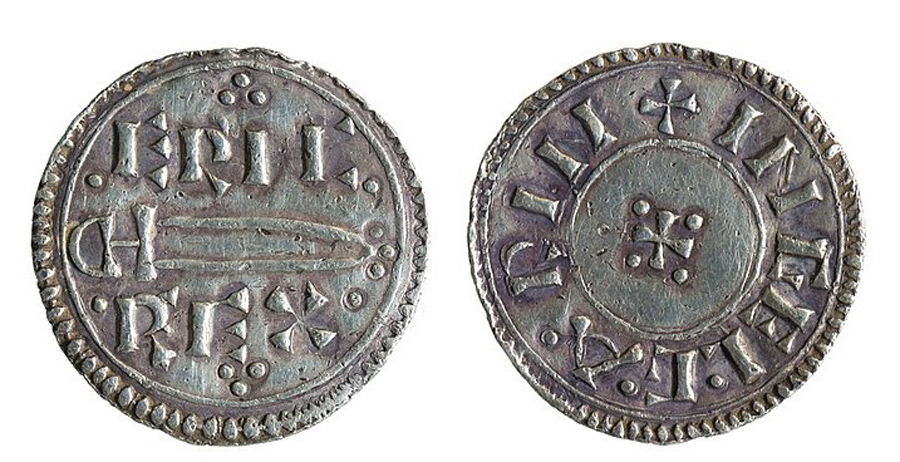Many visitors to York in the United Kingdom will stop by the Jorvik Viking center. Alongside the depictions of Viking and medieval life and the artifacts on display, one name stands out for its bloodthirsty sound: Eric Bloodaxe!
This ruthless-sounding Viking and his story is fascinating. A fierce warrior by all accounts, he was dethroned from his homeland but won himself a new kingdom overseas, in northern England.
Such legendary tales often attract embellishments and stories of fantastical deeds can easily spring up around great leaders. In these instances it can be very hard to separate fact from fiction.
Who was this man therefore, who it is claimed won two kingdoms and who carved his name into history? Who was the real Eric Bloodaxe, behind the myth?
A Real Man?
From the start, details on Eric Bloodaxe are scant, and it is unclear whether he is a single figure or multiple people. Living in the first half of the 10th century and dying in 954 AD, he is believed to have been a king of western Norway and of Northumbria, in the far north of England.
There was certainly a king of Norway called Eric during this period, ruling in the 930s. But the sources on this king come from sagas and therefore it becomes almost impossible to separate fact from fiction.
There were also stories of this Eric ruling as king of Northumberland for two periods in 947-8 and again in 952-4 AD. The accounts of this ruler are much more reliable, coming from contemporary sources and other attestations, but are fragmentary and offer little detail.

The two Erics have been considered the same since the 12th century and are traditionally considered to be one man, as explicitly mentioned in the sagas. However some modern historians dispute this, citing the unreliability of saga sources and the fact that “Eric” was a common name.
The Journey to Become a King
In the sagas, Eric was the son of the legendary First King of Norway, Harald Fairhair, being therefore born as Eric Haraldsson according to Scandinavian naming customs. Eric, Harald, and Harald’s other son Haakon probably existed, but the stories about their deeds are less certain.
- Thick Skinned: Why Did Vikings Really Cover Their Shields with Leather?
- Boudica: Legendary Warrior Queen who Defied an Empire
As per the sagas, Eric Bloodaxe became king after the death of his father, the favorite of Harald’s sons. Four of his elder brothers also fought for the crown and Eric killed several of his brothers to keep the throne. Finally, his brother Haakon was successful and Eric was deposed.
Cast off the throne of Norway by his victorious brother, Eric fled to England where he was received by King Aethelstan, one of the greatest Anglo-Saxon kings of England. Some stories tell of his piratical adventures around the Orkney islands off the coast of northern Scotland, which he eventually conquers.
A powerful interloper on the British Isles, Eric faced an island in turmoil. Northumbria had been won by Aethelstan and consolidated his position by the late 930s AD, but faced strong opposition from Irish and Viking claimants to the territory.
King Aethelstan died in 939 AD, leaving an 18 year old son Edmund as his heir. After 7 years fighting to consolidate his kingdom, Edmund died in 946.
The people of Northumberland preferred an Irish or Scandinavian king to rule by the Anglo Saxons from the south. Edmund had successfully curtailed these wishes, but his successor Eadred was less lucky when, in 947, the people of Northumbria chose Eric as their king.
A Kingdom Soaked in Blood
Eric’s seat was at York, known to the Vikings as “Jorvik”, creating at a stroke a defiant kingdom and taking over much of the northern lands claimed by the English King. Eric’s reputation was savage, even by Viking standards, but Eadred’s response was swift and brutal.

The Anglo Saxons launched a raid into Northumbria, laying waste to the countryside and destroying the minster at Ropin dedicated to St Wilfrid. The Archbishop of York, Wulfstan, met with Eadred and swore loyalty to him, no doubt frightened by the ferocity of the advance.
Eric harried the English army as it retreated southwards and inflicted heavy losses, but this wasn’t enough. The people of Northumbria, seeing at first-hand what Eadred could do, rejected Eric and sued for peace. His reign of less than a year was over.
Eric’s removal cleared the way for Eadred’s cousin Amlaíb Cuarán, the Irish king of Dublin, to return as king of Northumbria. It is not clear whether this was opportunistic or part of Eadred’s plan, but the Anglo-Saxon king did not intervene.
- Sviatoslav of the Grand Kievan Rus: another Alexander the Great?
- Kensington Runestone: Made By Vikings or a Forger?
However, Eric was far from defeated and built up a force of “northmen” who invaded Northumbria again. Eric won back his kingdom, either with a victory on the battlefield or by exploiting the political situation, in 952. Once again the Bloodaxe ruled from York.
This rule too was to be short-lived.
The Death of Erik Bloodaxe
Much is written about the death of Eric Bloodaxe, but almost all of it comes from the traditional sagas and is therefore of questionable authenticity. Several stories about his death in 954, two years after he won back his kingdom, appear in different texts.
The sagas talk of his death in a grand battle, one of five kings of England who died on that day. Other records tell of his death in Spain, leading an expedition to win another kingdom, although this may be a mistranslation.
The true end of Eric, according to English sources, may have been more prosaic. Betrayed on the bleak moors of Stainmore by a chieftain called Osulf who would later rule Northumbria, he was apparently slain by a man named Maccus, deposed and in frustrated exile.
According to legend, Erik Bloodaxe was buried at Rey Cross in Stainmore. But no evidence of a burial has been found at the site and the cross itself may just be a marker stone, making this attribution also only a legend.
A Real Man
Therefore, the burial site of Erik Bloodaxe is currently a mystery. But history records him as a real man and the burial ground might be somewhere out there still, on the Stainmore moors.
Modern archaeology is certainly sure that he is real. On the 3rd February 2009 archaeologists found 31 coins minted at York and inscribed with his name. Alongside the inscription was a sword symbol, a tribute to his warlike nature.

Two different styles of coins were found and it was first thought that these two types of coins represent two different reigns of Erik Bloodaxe. However this has not been confirmed, and the only current evidence for the two reigns of Eric Bloodaxe comes from ancient sources.
So, who was this man who twice conquered a kingdom in the British Isles? Was he the same eric who ruled another kingdom, in Norway, before being defeated by his brother?
If you consider the sagas to have no basis in reality, as ephemeral as tales of King Arthur, then all we know of Eric Bloodaxe is of his brief, bloody rule in Northumbria. But if we accept the sagas as based on fact, then we start to see a clearer picture of this violent and bellicose man.
Eric Bloodaxe would therefore be a warrior who fought his way to two kingdoms before being betrayed and killed. A great man in history, well worthy of the Viking Center on York that bears his name, and his depiction, today.
Top Image: A King of Norway and a King in England? Source: Warpedgalerie / Adobe Stock.
by Bipin Dimri